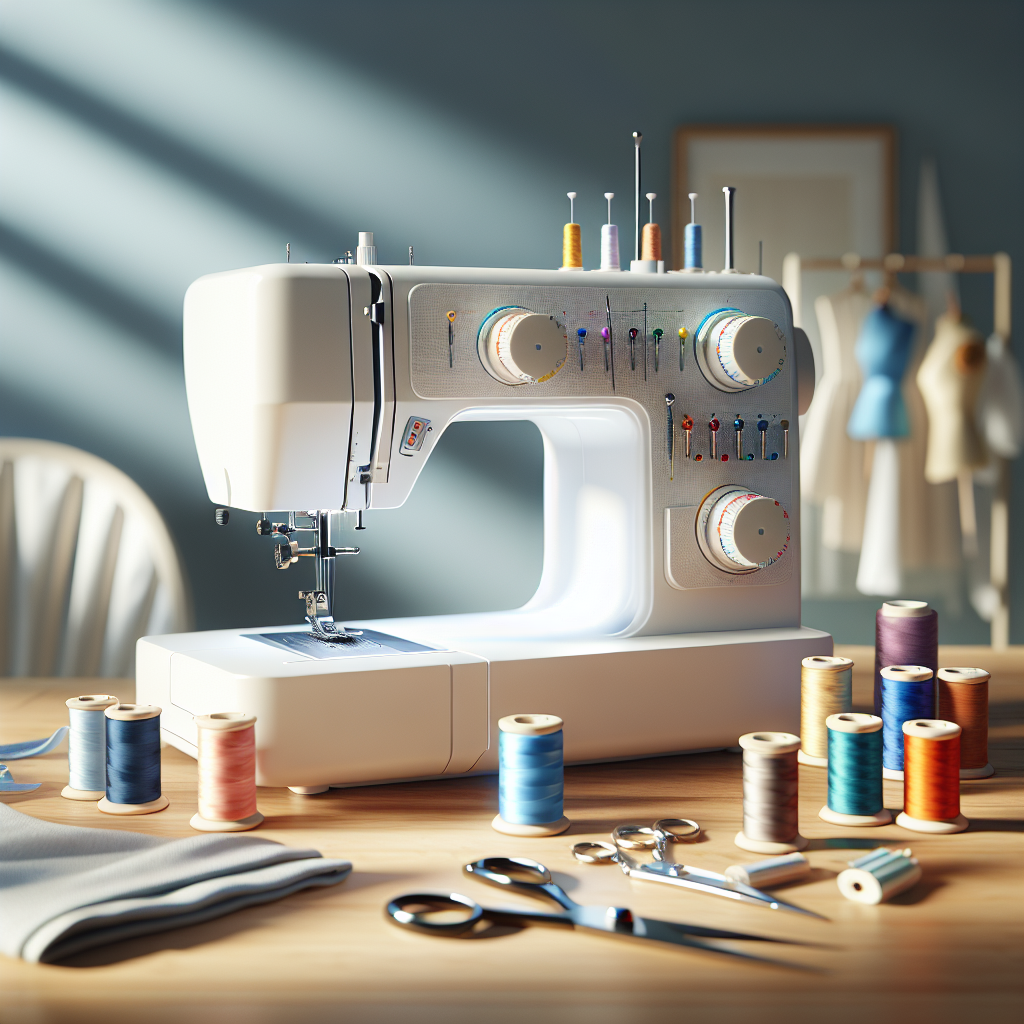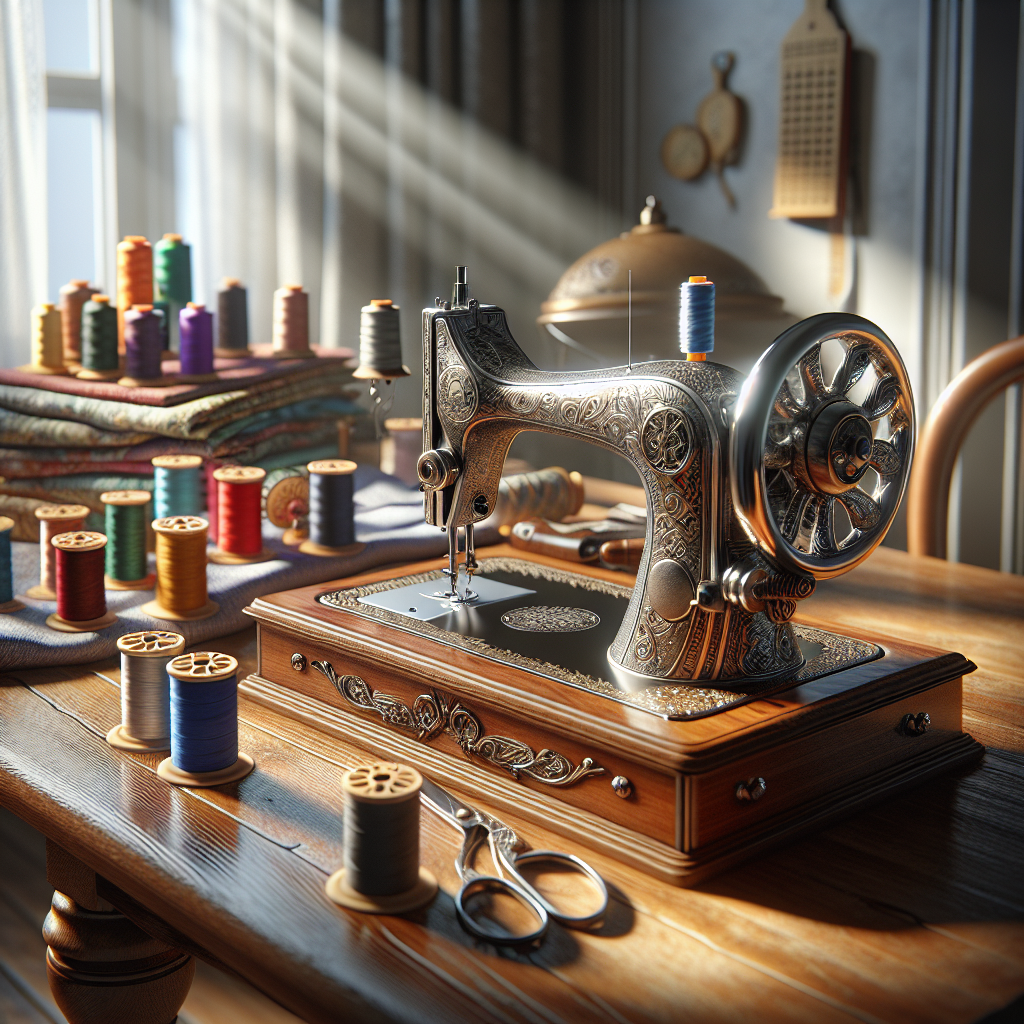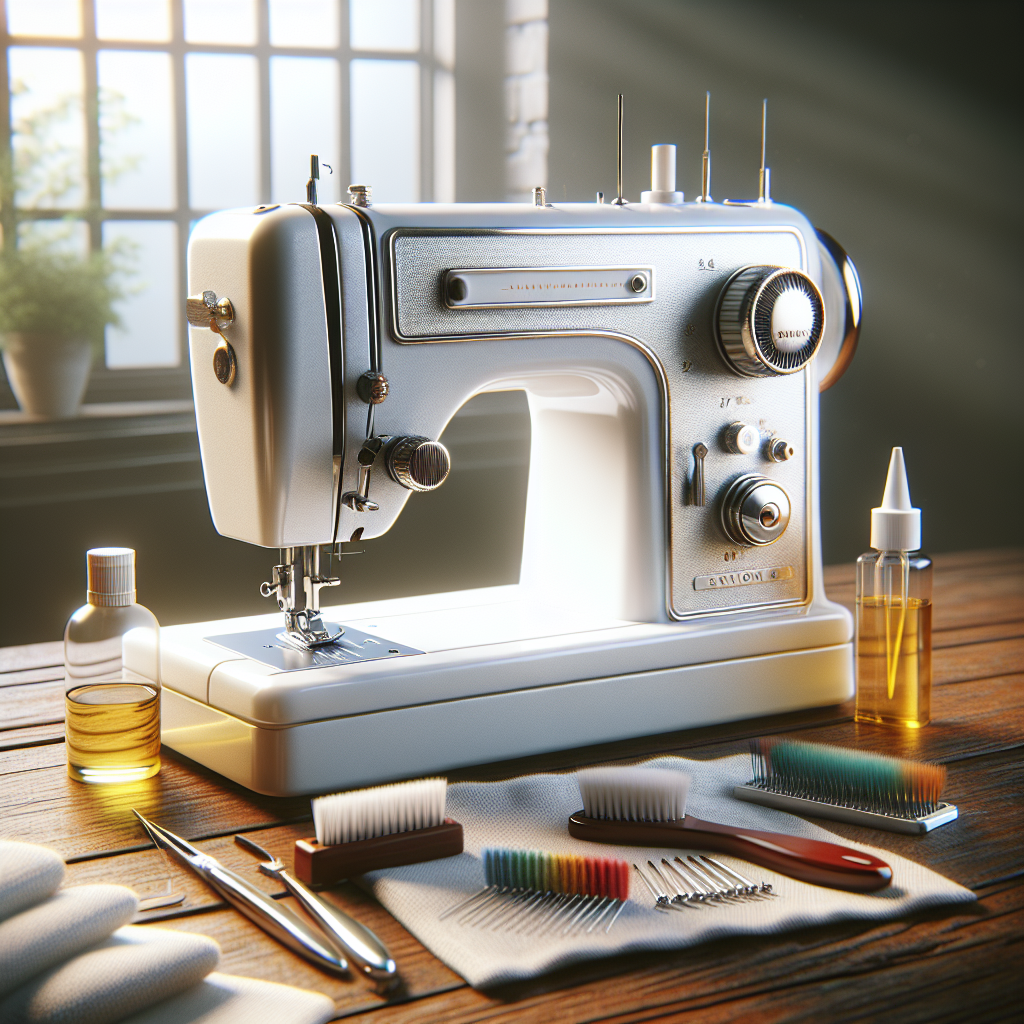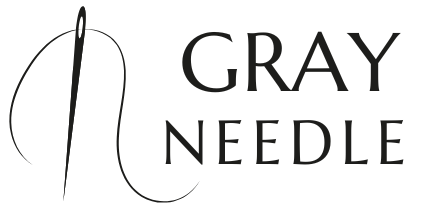Maintaining your sewing machine is crucial for ensuring its longevity and optimal performance. Just like any other mechanical device, a sewing machine requires regular care to function correctly and efficiently. Ignoring maintenance can lead to a range of issues, including poor stitching quality, machine jams, and even permanent damage.
One of the primary reasons for sewing machine maintenance is to prevent dirt and lint buildup. Over time, fabric fibers and dust can accumulate in the machine, affecting its performance. Regular cleaning not only keeps the machine running smoothly but also prolongs its lifespan.
Additionally, routine maintenance allows you to catch minor issues before they escalate into significant problems. For example, lubricating moving parts can prevent wear and tear, saving you on costly repairs down the line. Here are some essential maintenance tips to consider:
- Clean your machine regularly to remove lint and dust.
- Check and replace needles to avoid fabric damage.
- Oil moving parts as recommended by the manufacturer.
- Inspect belts and cords for signs of wear or damage.
By understanding the importance of sewing machine maintenance, you can ensure that your sewing projects are enjoyable and successful. Visit our website to learn more and get started today! Click here.
Essential Tools for Effective Machine Maintenance

To effectively maintain your sewing machine, having the right tools is essential. These tools not only make the maintenance process easier but also help ensure that your machine stays in top condition. Here’s a list of essential tools that every sewing enthusiast should have in their maintenance toolkit:
- Screwdriver Set: A set of screwdrivers, preferably magnetic, is vital for opening up the machine and accessing internal components for cleaning and lubrication.
- Lint Brush: A specialized lint brush is perfect for reaching tight spaces to remove dust and fabric remnants that can accumulate over time.
- Cleaning Cloth: Soft, lint-free cloths are essential for wiping down the exterior and interior parts of your machine without causing scratches.
- Oil for Sewing Machines: Using the right type of oil, as recommended by your machine’s manufacturer, keeps the moving parts lubricated and reduces friction.
- Needle System: Keeping a variety of sewing machine needles on hand ensures that you can replace them as needed, which is vital for maintaining the quality of your stitches.
- Thread Snips: Keeping a pair of thread snips handy allows you to quickly remove excess threads, keeping your workspace tidy and your machine running smoothly.
Equipping yourself with these essential tools can make maintenance less daunting and help you tackle any issues with confidence. Regular maintenance will not only enhance your sewing experience but also extend the life of your machine.
Step-by-Step Guide to Cleaning Your Sewing Machine

Cleaning your sewing machine is a crucial part of sewing machine maintenance that ensures smooth operation and longevity. Follow this step-by-step guide to keep your machine in pristine condition:
- Gather Your Supplies: Before you start, make sure you have a lint brush, cleaning cloth, screwdriver, and sewing machine oil ready.
- Unplug Your Machine: Safety first! Always ensure your machine is unplugged before beginning any cleaning process.
- Remove the Needle and Presser Foot: Take out the needle and presser foot to access the area underneath and around the needle plate.
- Dust and Lint Removal: Use a lint brush to gently remove any accumulated dust and lint from the feed dogs and around the bobbin area. Be thorough but gentle to avoid damaging any components.
- Clean the Bobbin Case: Remove the bobbin case and clean it with a soft cloth. Make sure to check for any thread remnants or debris.
- Wipe Down the Exterior: With a damp cloth, wipe down the exterior of the machine, ensuring that all surfaces are free of dust and grime.
- Lubricate Moving Parts: Apply a few drops of the manufacturer-recommended oil to the designated areas indicated in your machine’s manual. This helps keep the parts moving smoothly.
- Reassemble Your Machine: Once everything is clean and dry, carefully reassemble your machine, ensuring all parts are securely in place.
- Test Your Machine: Finally, plug in your machine and run a few stitches on a scrap fabric to ensure everything is working properly.
Regularly following this cleaning routine will not only enhance your sewing experience but also help prevent more serious issues down the line.
How to Properly Oil Your Sewing Machine

Oiling your sewing machine is an essential part of sewing machine maintenance that keeps it running smoothly and efficiently. Proper lubrication reduces friction and ensures that the moving parts operate seamlessly. Here’s how to properly oil your sewing machine:
- Check the Manual: Before you begin, consult your sewing machine’s manual. Different machines have specific oiling points and recommended oils.
- Use the Right Oil: Always use a high-quality sewing machine oil. Avoid using household oils or substitutes, as they can gum up the machine.
- Unplug Your Machine: For safety, make sure your sewing machine is unplugged before you start the oiling process.
- Locate the Oiling Points: Identify the parts that require oil, typically found around the needle bar, bobbin area, and any other moving components. Your manual will guide you on where to apply the oil.
- Apply a Small Amount: Using the oil applicator, place a few drops of oil on each designated point. It’s important not to over-oil, as excess oil can attract dust and lint.
- Run the Machine: After oiling, run your machine for a few minutes without any fabric. This helps distribute the oil evenly throughout the internal components.
- Wipe Off Excess Oil: Use a clean cloth to wipe away any excess oil on the exterior of the machine to prevent staining your fabric during sewing.
- Regular Maintenance: Incorporate oiling into your routine, ideally every 8-10 hours of sewing, or as recommended by your machine’s manufacturer.
By following these steps, you can ensure that your sewing machine remains well-lubricated and in optimal working condition, enhancing your overall sewing experience.
Common Sewing Machine Problems and Solutions
Even the best sewing machines can encounter issues from time to time. Understanding common sewing machine problems and their solutions can help you troubleshoot effectively and keep your projects on track. Here are some frequent issues you might face:
- Thread Bunching: If you notice thread bunching under the fabric, it may be due to incorrect threading or a tangled bobbin. Ensure that both the upper and lower threads are threaded correctly. Rethread the machine if necessary.
- Skipped Stitches: Skipped stitches can occur if the needle is damaged or if it’s not the appropriate type for your fabric. Replace the needle and ensure it’s inserted correctly. Additionally, check the tension settings, as improper tension can also lead to this issue.
- Fabric Jamming: If fabric gets stuck in the machine, it might be caused by using the wrong presser foot or sewing too thick of a material. Remove the fabric carefully, and consider switching to a walking foot for thicker layers.
- Machine Not Starting: If your sewing machine won’t turn on, check if it’s properly plugged in. Inspect the power cord for damage and ensure the foot pedal is functioning correctly.
- Uneven Stitching: Uneven stitches can result from incorrect tension settings or a dirty machine. Clean out lint and debris, particularly around the feed dogs, and adjust the tension as needed.
- Thread Breakage: Frequent thread breakage can be frustrating. This issue may arise from using poor-quality thread or incorrect threading. Use high-quality thread and ensure that the machine is threaded properly.
By knowing these common problems and their solutions, you can troubleshoot effectively, ensuring that your sewing machine remains a reliable tool in your crafting arsenal.
Best Practices for Long-Term Sewing Machine Care

To ensure your sewing machine remains in excellent working condition for years to come, following best practices for long-term care is essential. By implementing these strategies, you can enhance the performance and longevity of your machine:
- Regular Cleaning: Regularly clean your sewing machine by removing lint and dust from the bobbin area, feed dogs, and tension discs. Use a soft brush or cloth to prevent buildup that can impair function.
- Proper Oiling: Check the manufacturer’s instructions regarding oiling your machine. Some machines require regular oiling, while others are self-lubricating. Use only the recommended sewing machine oil to avoid damaging internal components.
- Cover Your Machine: When not in use, cover your sewing machine with a dust cover or store it in a case. This protects it from dust and debris, which can cause wear over time.
- Use High-Quality Thread and Needles: Invest in quality threads and needles, as they are less likely to break or cause issues. Using the right needle for the fabric type also reduces wear and tear on the machine.
- Follow Usage Guidelines: Always adhere to the manufacturer’s guidelines for your specific machine model. This includes using the right presser feet and accessories, as well as maintaining a proper sewing speed.
- Schedule Professional Servicing: Consider having your sewing machine serviced by a professional at least once a year. This can help identify potential issues before they become major problems and ensures optimal performance.
By incorporating these best practices into your routine, you can keep your sewing machine running smoothly and efficiently. Visit our website to learn more and get started today! Click here.

